Hyundai i10 vs Peugeot Partner – Differences & prices compared
Compare performance, boot space, consumption and price in one view.
Find out now: which car is the better choice for you – Hyundai i10 or Peugeot Partner?
The Hyundai i10 (Hatchback) comes with a Petrol engine and Manuel or Automatic transmission. In comparison, the Peugeot Partner (Cargo Van) features a Electric, Diesel or Petrol engine with Automatic or Manuel transmission.
When it comes to boot capacity, the Hyundai i10 offers 252 L, while the Peugeot Partner provides 1800 L – depending on how much space you need. If you’re looking for more power, decide whether the 90 HP of the Hyundai i10 or the 136 HP of the Peugeot Partner suits your needs better.
In terms of consumption, the values are 4.90 L per 100 km for the Hyundai i10, and 17.40 kWh5.20 L for the Peugeot Partner.
Price-wise, the Hyundai i10 starts at 14600 £, while the Peugeot Partner is available from 20500 £. Compare all the details and find out which model fits your lifestyle best!
Hyundai i10
The Hyundai i10 impresses with its compact design, making it an ideal choice for navigating through busy urban environments. Its interior is surprisingly spacious, offering drivers and passengers comfort beyond what one might expect from a city car. The model combines efficiency and practicality, making it an attractive option for those seeking both economy and functionality in their daily commute.
details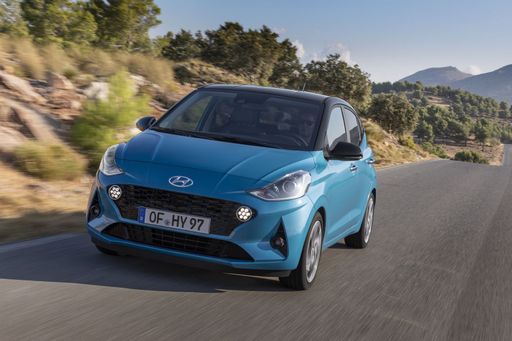 @ hyundai.news
@ hyundai.news
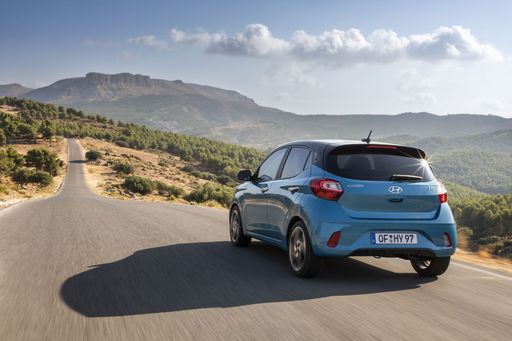 @ hyundai.news
@ hyundai.news
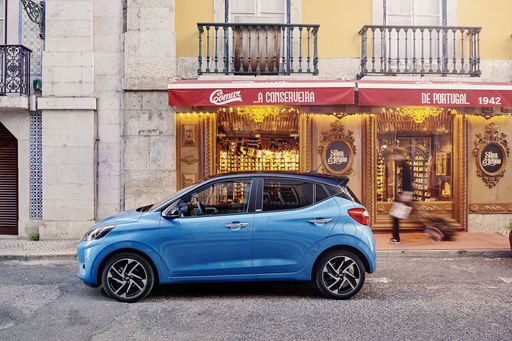 @ hyundai.news
@ hyundai.news
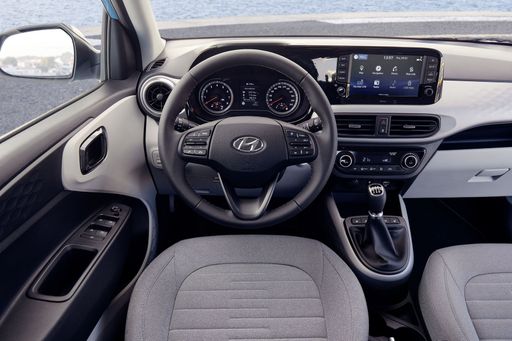 @ hyundai.news
@ hyundai.news
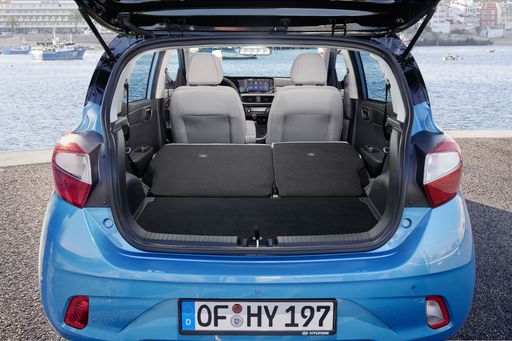 @ hyundai.news
@ hyundai.news
Peugeot Partner
The Peugeot Partner is a versatile and practical vehicle, ideal for both urban and rural settings. Its spacious interior and adaptable seating make it a popular choice for families and businesses alike. With a focus on reliability and efficiency, the Partner is well-suited to meet the demands of everyday transport.
details

|
|
|
|
|
Costs and Consumption |
|
|---|---|
|
Price
14600 - 19000 £
|
Price
20500 - 33800 £
|
|
Consumption L/100km
4.9 - 5.5 L
|
Consumption L/100km
5.2 - 6.3 L
|
|
Consumption kWh/100km
-
|
Consumption kWh/100km
17.40 kWh
|
|
Electric Range
-
|
Electric Range
354 km
|
|
Battery Capacity
-
|
Battery Capacity
-
|
|
co2
110 - 124 g/km
|
co2
0 - 143 g/km
|
|
Fuel tank capacity
36 L
|
Fuel tank capacity
53 - 61 L
|
Dimensions and Body |
|
|---|---|
|
Body Type
Hatchback
|
Body Type
Cargo Van
|
|
Seats
4 - 5
|
Seats
2 - 5
|
|
Doors
5
|
Doors
4 - 5
|
|
Curb weight
996 - 1099 kg
|
Curb weight
1329 - 1813 kg
|
|
Trunk capacity
252 L
|
Trunk capacity
1800 L
|
|
Length
3670 - 3675 mm
|
Length
4401 - 4751 mm
|
|
Width
1680 mm
|
Width
1848 mm
|
|
Height
1480 - 1483 mm
|
Height
1796 - 1812 mm
|
|
Payload
344 - 423 kg
|
Payload
611 - 991 kg
|
Engine and Performance |
|
|---|---|
|
Engine Type
Petrol
|
Engine Type
Electric, Diesel, Petrol
|
|
Transmission
Manuel, Automatic
|
Transmission
Automatic, Manuel
|
|
Transmission Detail
Manual Gearbox, Automated Manual
|
Transmission Detail
Manual Gearbox, Automatic Gearbox
|
|
Drive Type
Front-Wheel Drive
|
Drive Type
Front-Wheel Drive
|
|
Power HP
63 - 90 HP
|
Power HP
102 - 136 HP
|
|
Acceleration 0-100km/h
11.4 - 18.4 s
|
Acceleration 0-100km/h
11.2 - 14.8 s
|
|
Max Speed
143 - 175 km/h
|
Max Speed
135 - 184 km/h
|
|
Torque
93 - 172 Nm
|
Torque
205 - 300 Nm
|
|
Number of Cylinders
3 - 4
|
Number of Cylinders
3 - 4
|
|
Power kW
46 - 66 kW
|
Power kW
75 - 100 kW
|
|
Engine capacity
998 - 1197 cm3
|
Engine capacity
1199 - 1499 cm3
|
General |
|
|---|---|
|
Model Year
2024
|
Model Year
2024
|
|
CO2 Efficiency Class
C, D
|
CO2 Efficiency Class
A, E
|
|
Brand
Hyundai
|
Brand
Peugeot
|
Hyundai i10
Introduction to the Hyundai i10
The Hyundai i10 has consistently proven to be a dependable and stylish companion for urban driving. Known for its compact design and efficiency, this hatchback offers a perfect blend of modern aesthetics and practicality, making it a popular choice for city dwellers and small families alike.
Performance and Efficiency
The Hyundai i10 is available with both manual and automatic transmissions, catering to various driving preferences. Engine power ranges from 63 to 90 PS, providing a versatile driving experience for both novice and seasoned drivers. The fuel consumption varies between an impressive 4.9 to 5.4 litres per 100 kilometres, fitting for those looking to minimise fuel costs while also reducing their carbon footprint.
Engine and Transmission
Equipped with a choice of 1.0-litre or 1.2-litre engines, the i10 offers up to 172 Nm of torque, ensuring lively performance. The models feature front-wheel-drive configurations, allowing for smooth handling and reliable road performance. The car excels in city driving but is equally capable on longer journeys.
Interior and Comfort
Despite its compact size, the Hyundai i10 does not compromise on interior space and comfort. It accommodates four to five occupants comfortably, offering sufficient legroom and headroom. Its flexible seating arrangement and a 252-litre boot make it ideal for both quick trips and weekend getaways.
Safety and Technology
Safety remains a priority with Hyundai, and the i10 is no exception. It comes equipped with multiple airbags, stability control, and advanced braking systems. Technology-wise, the i10 features a user-friendly infotainment system with smartphone connectivity, ensuring a pleasant and connected drive.
Design and Style
The Hyundai i10’s design is both modern and sleek, making it stand out in the compact hatchback segment. With a length ranging from 3670 to 3675 mm, a width of 1680 mm, and a height of 1480 to 1483 mm, the i10 strikes a perfect balance between style and functionality.
Affordable Pricing and Value
The i10 is available in several trims including the Select, N Line, and Prime, among others, with prices ranging from €16,990 to €22,190. Considering its features and low running costs — with monthly expenses estimated between €694 to €793 — the Hyundai i10 offers substantial value for those seeking an economical yet stylish hatchback.
Conclusion
The Hyundai i10 combines efficiency, modern design, and practicality in a compact package. Whether you are seeking a reliable city car or an economical daily driver, the Hyundai i10 is a strong contender worth considering in the compact car market of 2024.
Peugeot Partner
Exploring the Peugeot Partner: A Blend of Versatility and Innovation
The Peugeot Partner has long been a staple in the world of light commercial vehicles, offering practicality and reliability. However, with the latest iterations, Peugeot has taken a bold step by integrating advanced technology and modern design to create a vehicle that's not just functional, but also efficient and environmentally friendly. Let's dive into the technical details and innovations that make the latest Peugeot Partner a standout choice in its class.
Efficient Powertrains: Diesel, Petrol, and Electric Choices
The 2024 Peugeot Partner provides a wide range of powertrains to suit different needs and preferences. Whether you're looking for the tried-and-tested efficiency of a diesel engine, the simplicity of petrol, or the future-ready appeal of electric, the Partner offers them all. With power outputs ranging from 102 to 136 PS and options for automatic and manual transmissions, it caters to those who desire flexibility in vehicle performance.
Embracing Electric: The E-Partner Revolution
One of the most notable features of the latest Peugeot Partner is the introduction of the e-Partner, an all-electric variant. This model comes equipped with a 50 kWh battery, providing a significant range of up to 354 km on a single charge, making it ideal for urban deliveries or longer commutes with no emissions. Its front-wheel-drive layout and electric motor deliver 136 PS, ensuring a lively yet smooth driving experience.
Room for More: Versatility and Cargo Space
Peugeot understands the importance of adaptability in commercial vehicles. The Partner offers up to 1,800 litres of cargo space, or the capacity to carry payloads ranging from 611 to 991 kg. Additionally, the choice of 4 to 5 doors and seating configurations from 2 to 5 seats ensures that the Partner can be customised to meet the specific needs of various business requirements.
Compact Yet Capable: Dimensions and Design
The Peugeot Partner showcases a clever balance of compact exterior dimensions and a spacious interior. With lengths between 4,401 mm and 4,751 mm, and a width of 1,848 mm, it delivers easy manoeuvrability in urban environments without compromising on cargo capacity. The height ranges from 1,796 mm to 1,812 mm, ensuring stability and on-road presence.
An Eye on Sustainability: CO2 Emissions and Efficiency
Peugeot's commitment to sustainability is evident in the Partner's diverse powertrain options and their associated CO2 emissions, which range from zero for the electric variant to a maximum of 143 g/km for certain internal combustion engine models. This variety allows businesses to choose based on their environmental goals as well as operational needs.
A Multi-Talented Performer: Performance and Practicality
With acceleration figures from 0-100 km/h in just 11.2 seconds for some models and a top speed of up to 184 km/h, the Partner is not just about practicality; it's also about performance. The available torque between 205 and 300 Nm contributes to confident driving dynamics whether navigating urban settings or cruising on the motorway.
Conclusion: The Partner of the Future
The Peugeot Partner continues to be a frontrunner in the small van segment, thanks to its innovative approach to design, fuel efficiency, and technological integration. By providing a range of powertrain options and configurations, the Partner meets the diverse needs of today's businesses while keeping an eye firmly on the future. Whether opting for the environmentally friendly e-Partner or the robust diesel variant, Peugeot has crafted a vehicle that truly earns the name "Partner".
The prices and data displayed are estimates based on German list prices and may vary by country. This information is not legally binding.
